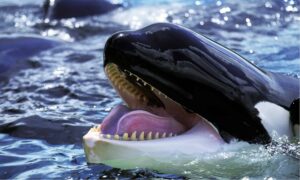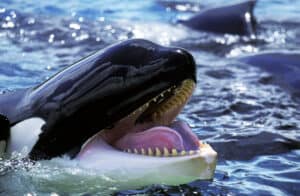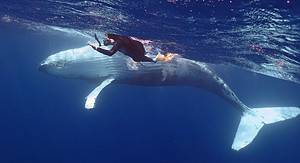How much do you know about the orca, also known as the terrifying ‘killer whale‘? If you still consider this large marine animal a whale, you need to brush up on your knowledge! These stunning black-and-white animals are far more fascinating than we could anticipate.
Are you prepared to sharpen up your orca expertise for your next maritime adventure? Discover some fascinating facts about the remarkable orcas by reading on. We’ve got the inside scoop on orca lifespans and other fascinating information you may not have known before.
Quick Crash Course On Orcas

Orcas are the largest members of the dolphin family.
©Heather Renee/Shutterstock.com
Orcas are a type of marine animal. They are sometimes misidentified as whales because of their ‘killer whale’ name. But did you know that orcas are actually classified as dolphins? They are, in fact, the largest members of the dolphin family! In ancient times, mariners reported seeing orcas hunting larger whales and called them “killer whales” as a result.
Orcas may be found in every ocean on the planet. You’ll find them in the Arabian Sea to the Gulf of Mexico, from Japan’s coastal waters to the Atlantic Ocean, and from the Arctic seas to Antarctica. Because of their extraordinarily broad range across the world and erratic migrations, determining the precise global population is challenging. It is estimated that there are more than 50,000 orcas.
Are you eager to learn more? Let’s learn everything we can about the average orca lifespan.
How Long Do Orcas Live?
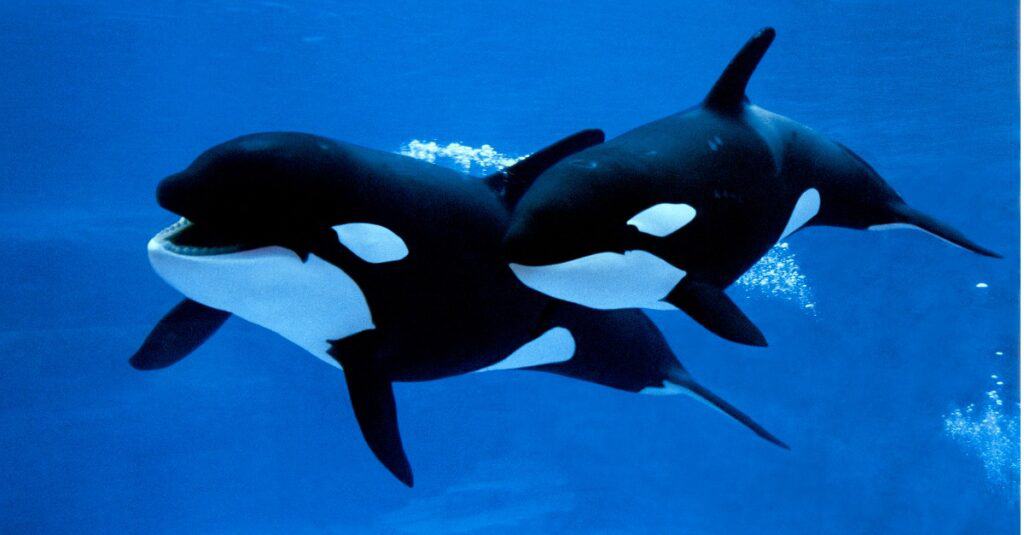
Orcas live longer in the wild than in captivity. They can live up to 80 years!
©slowmotiongli/Shutterstock.com
The average orca lifespan is between 30-50 years in the wild. In captivity, their lifespan has been averaged between 10-45 years. Orcas kept in captivity are thought to live shorter lives than those in the wild; however, this is open to scientific debate.
In orcas, life expectancy differs between sexes. Wild female orcas live an average of 50 to 80 years. Wild males live an average of 29 years, with a maximum lifespan of roughly 60 years.
Some researchers claim that females have lived even longer than most estimates. Orca Granny (J2) was considered by some experts to have been as old as 105 years old at the time of her death, despite a biopsy sample indicating her age to be 65 to 80 years.
Between the 1840s and 1930s, a male named Old Tom was observed every winter off the coast of New South Wales, Australia. He was estimated to be 90 years old. His teeth revealed that he died at the age of 35, although this method of determining age is now thought to be unreliable for older animals.
One male orca, known to researchers in the Pacific Northwest as J1, was believed to be 59 years old when he died in 2010.
Now that we understand the orca lifespan better, let’s look at how they develop from babies to adults.
The Average Orca Life Cycle
The orca life cycle is unique in many regards. Let’s explore each stage in more detail to better understand how these magnificent creatures reproduce.
Gestation Period
Pregnancies of killer whales last 18 months, making it one of the longest gestations of any mammal. Babies are born all year, and there is no statistical evidence supporting birth seasons.
Unfortunately, orcas have a high risk of miscarriage and newborn death which is why many of their pregnancies don’t result in birth.
Newborn Calf
Newborn baby orcas are called calves. Calves are around 8 feet long and weigh about 400 pounds when they are born. Each orca female gives birth to only one calf at a time. The calf’s dorsal fin and tail flukes are soft and malleable in the first few days after birth. They stiffen over time as the orcas grow. Most calves grow around 64 cm (25 in.) during their first year and acquire roughly 400 kg (882 lbs.). They grow to be around 53 cm (21 in.) during their second year.
Adolescence
As the young orcas grow, the adults teach them the skills necessary for hunting and interacting with other orcas. They advise them on the ideal eating and breeding sites, as well as the optimal migration routes. Orca culture varies widely among groups, and knowledge is passed down from generation to generation. Even when they reach adults, orcas remain with their mothers.
Adult Orca
Female orcas reach sexual maturity between the ages of 6 and 10 and begin mating around the age of 14. Males acquire sexual maturity between the ages of 10 and 13 years.
Orcas are extremely sociable creatures with intricate social structures. As they age, they continue to live in pods of up to 50 members. However, this varies according to their specific group. Males, females, and calves of varying ages make up a pod. They frequently stick together in pods, share prey, and don’t leave the group for more than a few hours at a time.
What Factors Threaten The Orca’s Lifespan
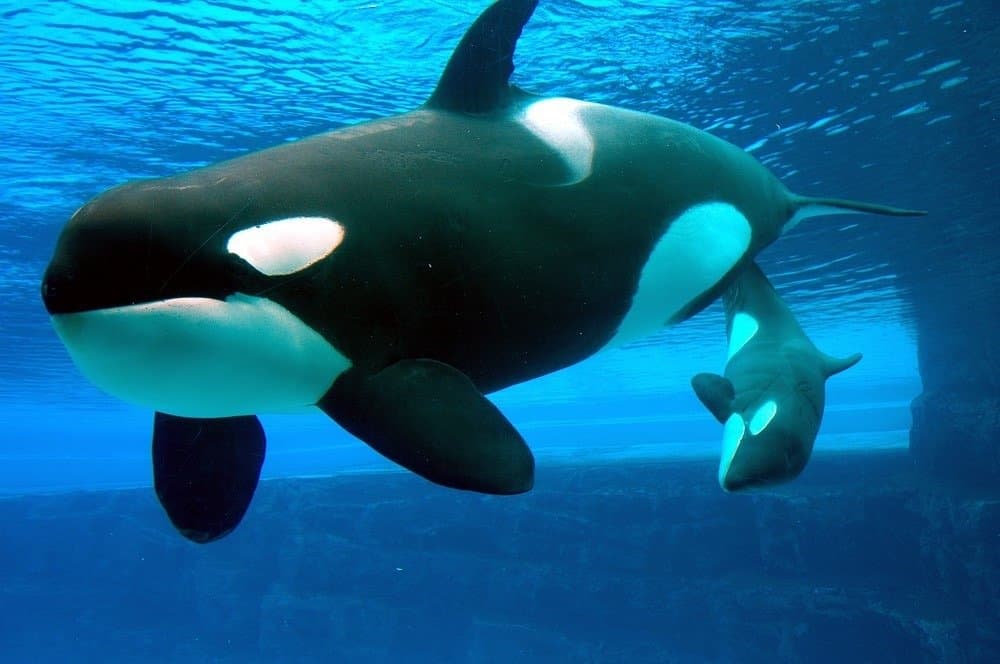
Orcas sleep with one half of their brains at a time, so they remain conscious while resting.
©Jan Daly/Shutterstock.com
Orcas are apex predators, which means they have no natural predators. However, they are still susceptible to threats from other sources.
Orcas are threatened by:
- Getting trapped in fishing nets by accident: Orcas are extremely vulnerable to being caught in fishing gear. Whales that become entangled may drag and swim for long distances with connected gear or become fixed in a spot and become unable to swim. These kinds of incidents cause exhaustion, impaired feeding capacity, or serious injuries, which can lead to death.
- Oil spills: The 1989 Alaska Exxon Valdez oil disaster directly caused the deaths of individual killer whales. On the other hand, oil spills reduce the variety of prey species available to killer whales, which can have an indirect effect on the animals. In addition, they have been observed to accumulate some pollutants in oil, such as polychlorinated biphenyls (PCBs), especially because they are known to migrate in various waters.
- Food scarcity: Overfishing and habitat destruction have reduced the availability of prey for some orcas. Killer whales may have lower reproduction rates and higher death rates if there is insufficient prey.
The photo featured at the top of this post is © FineShine/Shutterstock.com
Thank you for reading! Have some feedback for us? Contact the AZ Animals editorial team.



